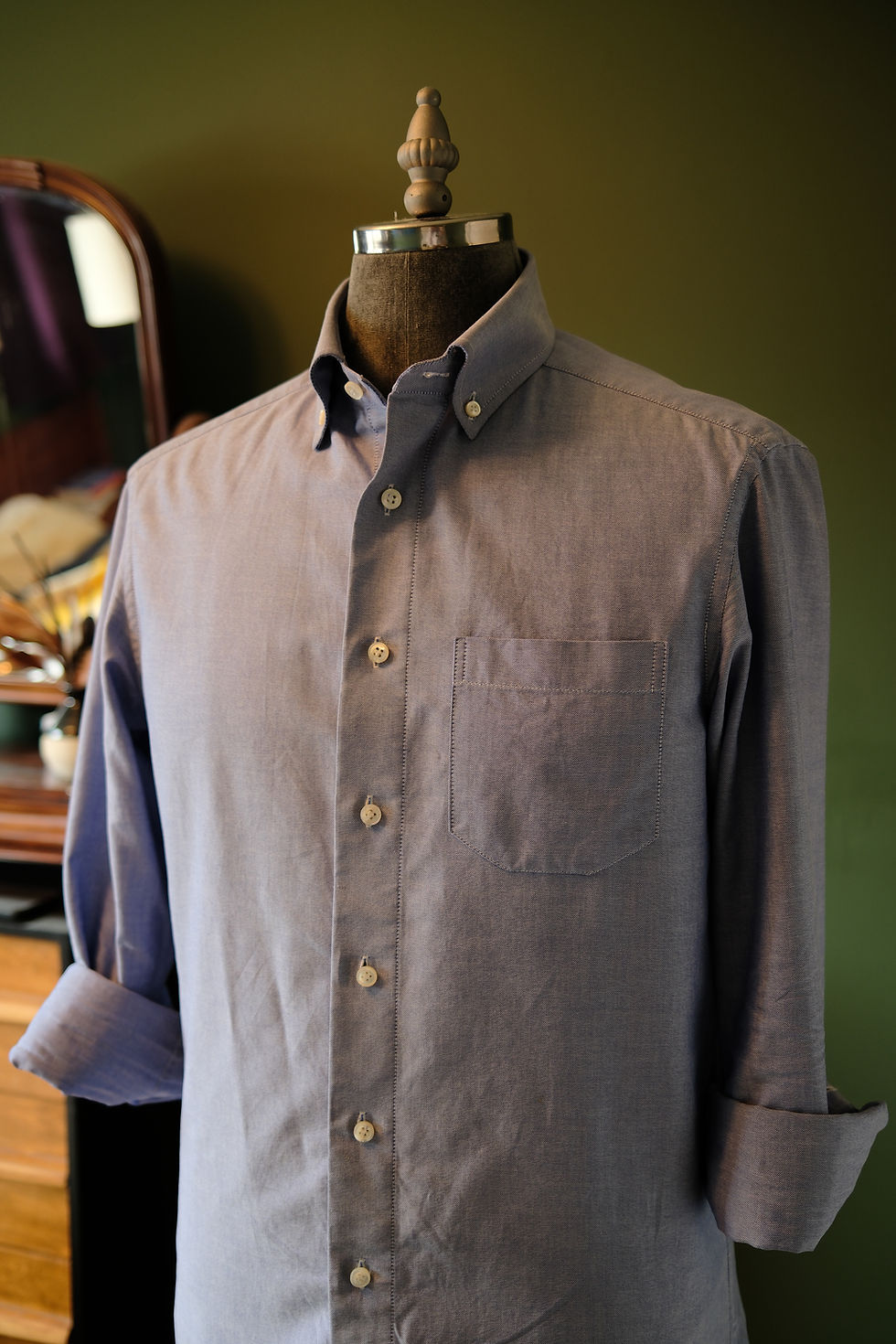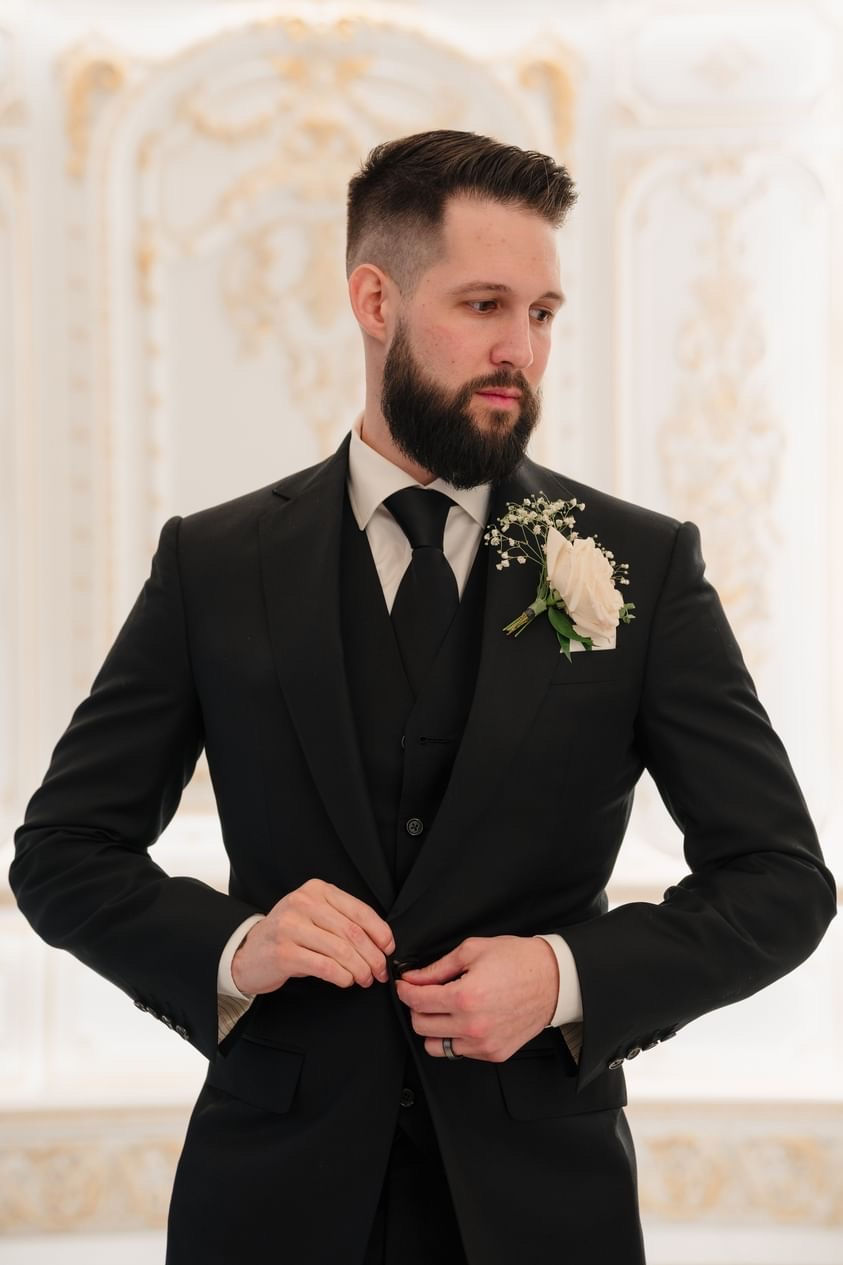Blazers 101: History, Styles, and How to Wear Them
- Allan Sinclair
- May 19
- 6 min read
Updated: Oct 19
A blazer is a tailored jacket distinguished by its decorative elements - metal buttons, contrasting piping, and often a crest or patch on the breast pocket. Unlike regular suit jackets, blazers can be worn as standalone pieces with non-matching trousers.
The blazer's origins trace back to the 1800s Cambridge University rowing club, where members wore bright red flannel jackets. The term "blazer" emerged from these eye-catching garments that seemed to blaze in the sunlight. A significant turning point came in 1837 when Queen Victoria visited HMS Blazer—the crew's smart navy blue jackets impressed her so much that they became standard naval attire.
Traditional blazers fall into two main categories:
Nautical blazers: Double-breasted with rigid construction and plain worsted cloth
Sporting blazers: Single-breasted with softer construction and block stripe patterns
These distinctive garments have evolved from exclusive club uniforms to versatile wardrobe staples, maintaining their status as refinement and classic style symbols.
Key Features That Define a Blazer
A blazer's distinctive character comes from three main elements that set it apart from other formal wear:
1. Decorative Buttons
Metal buttons with naval motifs or club emblems
Brass, silver, or gold-toned finishes
Typically arranged in sets of two or three for single-breasted styles
Six buttons in a double-row configuration for double-breasted variants
2. Piping Details
Contrasting cord trim along edges and pockets
Colour-coordinated with the blazer's primary shade
Adds visual interest and defines structural lines
Standard in sporting clubs and school uniforms
3. Crests and Patches
Positioned on the left breast pocket
Embroidered or sewn-on designs
Represents club membership, school affiliation, or military rank
Custom monograms for personal branding
These defining features transform a simple jacket into a true blazer, creating a garment that balances formality with a distinctive personality. A blazer without these elements is simply a tailored jacket - the decorative components establish its authentic identity and heritage.
Different Types of Blazers You Should Know About
Blazers come in distinct styles, each serving unique purposes and settings. Let's explore the main types you'll encounter:
1. Nautical Blazers
Double-breasted design with six buttons
Rigid construction for a structured silhouette
Plain worsted cloth in navy blue
Metal buttons with naval motifs
Traditional maritime heritage
2. Sporting Blazers
Single-breasted cut
A softer, more relaxed construction
Patch pockets for casual functionality
There are no vents in the back
Block stripe patterns
Club crests or patches
The choice between double-breasted and single-breasted blazers significantly impacts your style. Double-breasted blazers create a bold, formal statement with overlapping front panels and multiple buttons. Single-breasted designs offer versatility and a streamlined look, making them ideal for casual and semi-formal settings.
Your body type plays a crucial role in selecting between these styles. Double-breasted blazers complement taller frames, while single-breasted options suit most body types and create a slimming effect.
Understanding Blazer Construction and Cut
The construction method of your blazer directly influences its character and performance. A rigid construction creates a structured silhouette with pronounced shoulders and a crisp appearance - typical in nautical blazers. In contrast, soft construction offers a relaxed drape and natural shoulder line, which is standard in sporting blazers.
The internal canvas plays a crucial role:
Full canvas: Hand-stitched layers create a superior drape
Half canvas: Combines structure with flexibility
Fused construction: Delivers a stiffer feel
Block stripe cloth stands as a distinctive feature in sporting blazers. These bold, broad stripes run vertically and differ from traditional pinstripes or chalk stripes in business suits. You'll recognize block stripes by their:
Width: Typically 1-2 inches wide
Colours: Bold contrasting combinations
Pattern: Clean, straight vertical lines
The cut of your blazer determines its fit and silhouette. British cuts feature high armholes and shaped waists, while Italian cuts offer softer shoulders and a more relaxed fit. American cuts provide a natural shoulder line with a straight body.
Blazer vs Sport Coat vs Suit Jacket: What's the Difference?
A suit jacket is part of a matching outfit made from the same fabric as your pants. It creates a coordinated look that's essential for formal events and business situations.
The classic blazer is different because it doesn't have matching pants. Here are some key features that define a blazer:
Decorative metal buttons
Club crests or patches
Distinctive piping
Naval or sporting heritage
Solid colours (usually navy)
On the other hand, a sport coat has its own unique characteristics:
Varied patterns like checks, plaids, or herringbone
Casual fabric choices
Relaxed construction
Multiple pocket styles
Softer shoulders
Each of these garments serves a different purpose in your wardrobe. Suit coats are perfect for formal occasions, blazers work well for both casual and dressy events, and sport coats are great for laid-back settings. You can customize each piece to fit your style and body type through tailoring options such as made-to-measure or bespoke services.
The History and Cultural Significance Behind Blazers
Blazers have a fascinating history that dates back to the 1800s. They were originally bright red flannel jackets worn by the Lady Margaret Boat Club of St. John's College, Cambridge. The word "blazer" comes from these eye-catching red jackets that set rowing club members apart.
The Influence of Queen Victoria
A significant turning point in Blazer history happened in 1837 when Queen Victoria visited the HMS Blazer. The ship's captain wanted to impress the queen, so he dressed his crew in navy blue double-breasted jackets. The queen approved, which sparked a fashion revolution, making the naval-style blazer a symbol of prestige.
Blazers in British Culture
The blazer became an essential part of British culture in several ways:
It represented membership in prestigious institutions.
It was the standard uniform in elite boarding schools.
It was worn during military ceremonies.
It was essential clothing for sporting clubs.
The Evolution of Blazers
In the UK fashion scene, blazers evolved from being strictly formal to becoming a versatile style statement. British subcultures, especially the mods of the 1960s, embraced blazers as part of their signature look by pairing them with narrow lapels and slim-cut designs.
Blazers Today
Today, British fashion houses continue reinventing blazers while keeping their traditional elements intact. Crests, decorative buttons, and structured silhouettes are essential for blazer design.
How to Style a Blazer for Any Occasion
A blazer's versatility shines through its adaptability to different dress codes. Here's your guide to styling blazers for any setting:
1. Formal Events
Pair a navy double-breasted blazer with gray wool trousers
Add a crisp white dress shirt and silk tie
Complete with black Oxford shoes
2. Business Casual
Choose a single-breasted blazer with dark chinos
Layer over a light blue button-down shirt
Skip the tie and opt for brown leather loafers
3. Weekend Style
Sport a relaxed-fit blazer with dark jeans
Wear with a plain T-shirt or polo shirt
Add white sneakers for a modern touch
4. Smart Casual Events
Select a textured blazer with khaki trousers
Match with a turtleneck sweater in fall/winter
Style with suede loafers or dress boots
5. Summer Occasions
Pick a lightweight linen blazer
Combine with light-coloured cotton trousers
Layer over a short-sleeve button-up shirt
Finish with leather sandals or boat shoes
Debunking Common Misconceptions About Blazers
Fast fashion retailers often mislabel basic suit jackets as blazers, creating confusion about what constitutes a true blazer. Let's clear up these common misconceptions:
Myth 1: Any tailored jacket is a blazer
A blazer requires specific design elements, such as decorative buttons, piping, or a crest/patch on the breast pocket. It's simply a suit jacket or sport coat without these distinguishing features.
Myth 2: Blazers are always navy blue
While navy is traditional, blazers come in various colours and block stripe patterns. The defining characteristic lies in the decorative elements, not the colour.
Myth 2: Blazers are just casual suit jackets
Blazers can be formal or casual, depending on their construction and styling. A nautical blazer with rigid construction can be as formal as any suit jacket.
Myth 4: All blazers have metal buttons
While decorative buttons are essential, they don't need to be metal. The key is that they're distinctive and serve an aesthetic rather than purely functional purpose.
These misconceptions stem from modern retailers using "blazer" as a catch-all term for any structured jacket, diluting its true meaning and heritage.
Final Thoughts on Choosing the Right Blazer for You
Selecting your perfect blazer comes down to understanding your personal style and body type. A well-chosen blazer is a versatile wardrobe cornerstone that elevates your appearance across multiple settings.
Key considerations for your blazer selection:
Body Type Matching
Athletic Build: Single-breasted blazers with structured shoulders
Slim Build: Double-breasted styles add visual bulk
Broader Build: Dark-colored single-breasted cuts create a streamlined look
Lifestyle Alignment
Business Environment: Navy worsted blazer with traditional brass buttons
Creative Industry: Unstructured blazer in contemporary fabrics
Casual Settings: Soft-shouldered blazer in lightweight materials
Essential Features
Quality button construction
Clean stitching along lapels
Proper sleeve length showing 1/4 inch of shirt cuff
Comfortable shoulder fit without pulling
A navy blue blazer is your safest first investment, offering maximum versatility. The right blazer transforms basic outfits into polished ensembles while maintaining comfort throughout the day. Remember: your blazer should feel like a natural extension of your style rather than a forced addition to your wardrobe.









